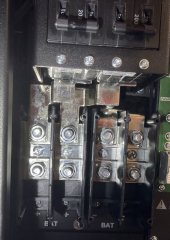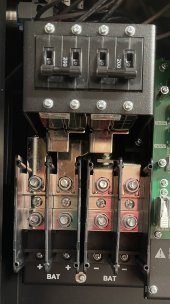Subdood
Photon Wrangler
Yes, it does have two dp 200A breakers, but he was pointing at the positive 200A breaker when he said it popped (at 7:15 in the video). Did both pop? Maybe, but he didn't say so.I think it was worded perhaps confusing to some, my edit in [ ]:
There are two double pole 200A breakers. I believe even though he had cables going to each double pole breaker, only one double pole breaker was in use.
That's what I said originally, after I edited out the part about both positive posts being separated:
Either way, it didn't like it.He tried to push about 240A through a single pole of the double pole 200A breaker and popped it.
Last edited:





